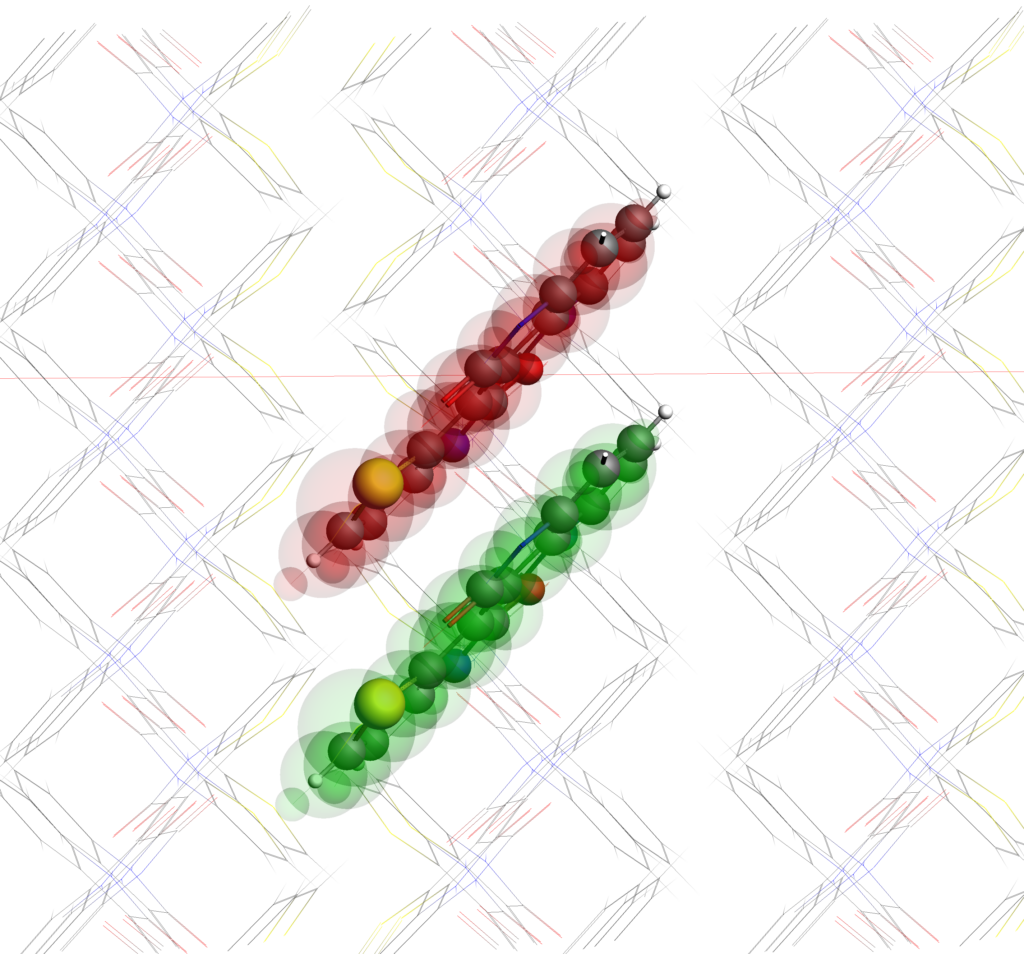Ambipolar Organic Field-Effect Transistors – Thienoisoindigo Derivatives
A series of substituted, unsymmetrical thienoisoindigo (TIIG) analogues were prepared, crystallized, and tested in thin-film transistors.

TIIG and six modifications have been studied experimentally and computationally. The different intermolecular interactions lead to different stacking motifs, which lead to different electron and hole mobility. While all materials display ambipolar charge carrier mobility, some materials show n-dominant ambipolar transistor properties, and others p-dominant. The mobility behavior of the materials are well understood by ADF calculations on the transfer integrals and reorganization energies.
Two materials in particular, Dth-TIIG and Dfu-TIIG show high (~0.03 cm2, V-1 s-1), well-balanced ambipolar carrier mobilities.
Do you want to do mobility calculations yourself?
A video demonstrates how easy it is to set up transfer integrals with ADF. Also check out our updated tutorial on charge transfer integrals, including pointers to a python workflow, including one for reorganization energies.
D. Yoo et al. Ambipolar organic field-effect transistors based on N-Unsubstituted thienoisoindigo derivatives, Dyes and Pigments 180, 108418 (2020)
Key conceptsADF Charge Transport OFET organic electronics